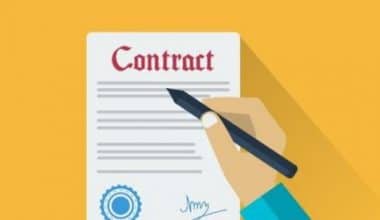You walk into your small business one morning, coffee in hand, ready to take on the day. But as soon as you flip on the lights, you stop dead in your tracks. There’s water everywhere – flooding in from the back room and spreading fast. You rush to find the source, only to see a burst pipe that’s still spewing water all over your brand-new inventory.
Water Damage Happens In An Instant
This nightmarish scenario is far too common for many business owners. Summit Cleaning & Restoration In Portland Oregon is one company that is used to dealing with the aftermath of floods and burst pipes.
You think it’s too late, the damage is done. And for good reason – water can wreak absolute havoc on a business when it seeps in unexpectedly. From thousands in repair and restoration costs to weeks of lost income, a single water damage event can spell disaster.
But don’t panic just yet. With the right preparation and insurance, you can minimize and recover from water damage. Walk through the main sources of water hazards, how they impact your company, and what you need to do to protect your business.
It’s Leaks That Bring Most Businesses To Their Knees
While dramatic weather events like floods make headlines, it’s actually indoor leaks that cause most commercial water damage according to the Insurance Information Institute. Common culprits include:
- Burst or leaking pipes: Corroded, frozen, or defective pipes can suddenly burst and spew water at any moment. Even a small 1/8-inch crack can leak a whopping 250 gallons per day.
- HVAC failures: Faulty parts and drainage issues with AC units, water heaters, and underfloor heating systems often lead to gushing HVAC leaks.
- Appliance leaks: Daily wear and tear causes washing machines, dishwashers, and water heaters to eventually fail – and flood nearby areas when they do.
These “silent killers” can be difficult to detect until it’s too late. However, being proactive with maintenance and leak detection can help you catch issues early. Installing smart monitoring systems, replacing worn parts regularly, and performing thorough HVAC and appliance inspections are wise moves. An ounce of prevention is worth a pound of cure when it comes to leak damage.
Mother Nature’s Wrath Also Inflicts Massive Flood Damage
While indoor issues cause most water claims, don’t discount the destruction Mother Nature can inflict on your property either. Storm systems that bring prolonged heavy rainfall, snowmelt, and hurricane storm surges can all lead to devastating floods.
In fact, the Federal Emergency Management Agency (FEMA) estimates that a single inch of floodwater in a 2,000-square-foot commercial space will cause over $20,000 in damage. High-risk flood zone areas near coasts and rivers see these major flood events far too often.
Roofs and walls can also leak and lead to interior damage when intense weather strikes.
Poured rain can seep through worn or damaged sections of the roof, and damaged seals around vents, lights, and exterior units can provide an entry point for water. While you can’t control the weather, proactive maintenance and sealing can help minimize leaks.
Sewage and Drain Backups
Along with leaks and weather damage, blockages below ground can also lead to watery disasters. When severe rainstorms strike, overwhelmed sewers and drains often back up – sending raw sewage spewing upward. Undetected clogs deep within drainage pipes can also lead to backups and interior flooding.
Beyond the obvious ick factor, sewage and drain water also pose major health risks. Raw sewage carries bacteria like E.coli and is classified as a biohazard. Any areas touched by the contaminated water will require extensive decontamination and purification.
Preventing these backups requires diligent monitoring and maintenance of your property’s plumbing. Including plumbing inspections in your risk assessment plan will help. But, sudden blockages can still strike out of the blue. Staying prepared is key to rapid response when sewers and drains get overloaded.
Water Can Wreck Structures And Inventory In An Instant
Once the water starts flowing where it shouldn’t, wide-ranging damage can unfold rapidly throughout your property. Common destructive effects include:
- Structural harm: Drywall, flooring, wood, and masonry materials quickly soak up water – warping, swelling, or becoming rotten and weakened. Mold Growth in damp areas creates a toxic health hazard.
- Damaged inventory & equipment: Anything stored on-site can become a waterlogged loss. Electronics and specialty equipment are especially vulnerable to getting fried.
- Contamination: As touched on before, floodwater often contains harmful bacteria, chemicals, and pollution. Porous surfaces readily absorb these contaminants – requiring extensive sanitization.
- Lost income: Depending on the scale, water damage can force temporary full or partial shutdowns for cleanup and restoration. Staff can’t work and customers can’t visit during this downtime – grinding income to a halt. A business continuity plan can also help at this juncture.
Clearly, every business needs to take the threat of water damage seriously. An “out of sight, out of mind” approach will only leave you vulnerable.
Here’s How To Respond When Water Strikes
If your business suffers water damage, swift action is critical to mitigate threats to your property, inventory, and income. Here are four must-do response steps:
1. Identify and stop the water source
Locate the origin point of the water immediately and stop additional flooding. Shut off main water lines if needed for burst pipe flooding.
2. Document the damage
Take photos and videos of all affected areas, materials, and equipment before touching anything. This provides proof for insurance claims.
3. Call your insurance provider
Notify them right away that your commercial property faces water damage. Provide the documentation and ask about policy coverage.
4. Call water damage restoration pros
Don’t delay – contact a certified professional restoration company immediately to start drying out your property ASAP. The first 72 hours are critical.
Follow these steps, and you’ll greatly reduce how much time and money it takes to bounce back after the waters recede.
Insurance Coverage Varies – Know What’s In Your Policy
Insurance can make all the difference in recovering from a costly water damage event. However, not all policies fully cover water damage, so reviewing your specific coverage is essential.
Here are some common coverage options that can help safeguard your business:
- Commercial property insurance: This covers damage to your building, contents, and inventory due to covered causes like indoor pipe leaks. Make sure bursts from frozen pipes are covered.
- Business interruption insurance: This helps to keep suppliers and staff paid for while restoration work is carried out.
- Commercial flood insurance: Provided by the National Flood Insurance Program, this add-on policy specifically covers flood damage, which is excluded by basic commercial property insurance. It’s a must for flood zone areas.
Take time to understand your risks, where you’re exposed, and what your insurance actually covers. Getting caught without the right policies can put your company’s future in jeopardy.
Summing It Up
Water damage can happen suddenly. A small leak that has gone unnoticed can erupt as the pipe bursts, quickly flooding a business and putting a halt to operations. This can lead to inventory loss, business interruptions, and even structural damage.
Carrying out plumbing inspections, using leak detection technology and preventative maintenance will all help. Insurance is vital too because once water damage strikes, you will need to start the restoration process.






